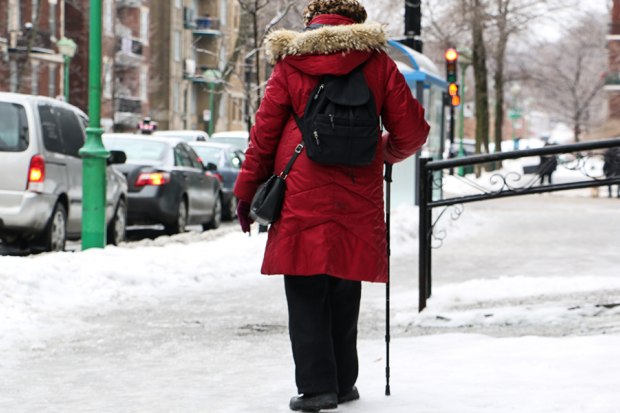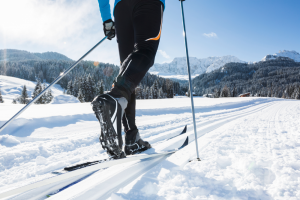Winter Weather Walking How To Walk Safely On Ice And Slippery Surfaces
Learn expert tips for safely walking on ice and slippery surfaces during extreme winter weather.
Winter weather often affects driving conditions, but extreme storms can also impact the safety of something as simple as walking to and from your car and other places outside. While it’s always best to stay inside during treacherous weather whenever possible, sometimes you simply must brave the conditions and walk outside. In such cases, these winter weather safety tips tell you how to safely walk on ice and slippery surfaces.
Basic Winter Weather Walking Precautions
The American Red Cross advises everyone to use caution when walking on snowy, icy sidewalks and other surfaces. This means:
- Move slow and think about your next move before making it. Keep your body loose and your feet spread at least one foot apart to help give you a stable base.
- Slightly bend your knees and try to walk flat-footed with your center of gravity over your feet to help maintain balance.
- When you’re ready to go, take very small steps and be sure to put your whole foot down at once, being sure to keep your stance wide for stability. You can also shuffle your feet if that feels better, but remember to keep both of your feet firmly planted and at least one foot apart.
- Never put your hands in your pockets while walking on slippery surfaces. Instead, extend your arms out to your sides to help maintain balance and help catch you if you fall.
- Avoid wearing shoes with smooth soles and instead aim to wear rubber-soled shoes or neoprene shoes with grooved soles that are better able to maintain traction.
- Approach all areas with caution, as ice can be super thin and nearly impossible to see with the naked eye. Some spots of ice can deceptively look like a wet spot rather than the slippery area they truly are.
- Avoid taking shortcuts through unplowed areas. Instead, stick to designated walking paths whenever possible. This rule may be broken on ice covered sidewalks and driveways that are on hills; sometimes it’s better to walk on the grassy edge to help maintain traction.
- Always use hand railings when walking on steps.
- Consider wearing a bulky coat that will help cushion you if you fall, but be sure it’s not so cushioned that it impairs your vision or ability to hear what’s going on around you.
RELATED: How To Keep Your Hands And Feet Warm Without A Heater
Additional Tips For Walking On Ice And Slippery Surfaces
- Carry a small bag of grit or non-clumping cat litter that you can cast in front of you on slippery surfaces. The litter will help give your shoes additional traction and prevent slips and falls.
- If the conditions are really bad, try to wear ice spikes or ice grippers on your boots to help with stability on ice. Be sure to remove them before you walk on smooth surfaces like tile, as they can be dangerously slippery when not used on snow and ice.
- Considering using ski poles or walking sticks for additional balance and to help pierce into the ice and snow.
- Seniors may consider wearing a hip protector (a lightweight belt with shields on the hip area) to help minimize injuries if and when falls happen.
As we mentioned above, it's always best to stay inside and avoid walking on ice and slippery surfaces whenever possible during winter months. But the above tips can help keep you safe when you must brave extreme winter conditions that include icy, snowy walkways. When you do make it back inside, treat your cold feet and toes with one of these warming winter foot soaks.
Notice concerning medical entries:
Articles having medical content shall serve exclusively for the purpose of general information. Such articles are not suitable for any (self-) diagnosis and treatment of individual illnesses and medical indications. In particular, they cannot substitute for the examination, advice, or treatment by a licensed physician or pharmacist. No replies to any individual questions shall be effected through the articles.






